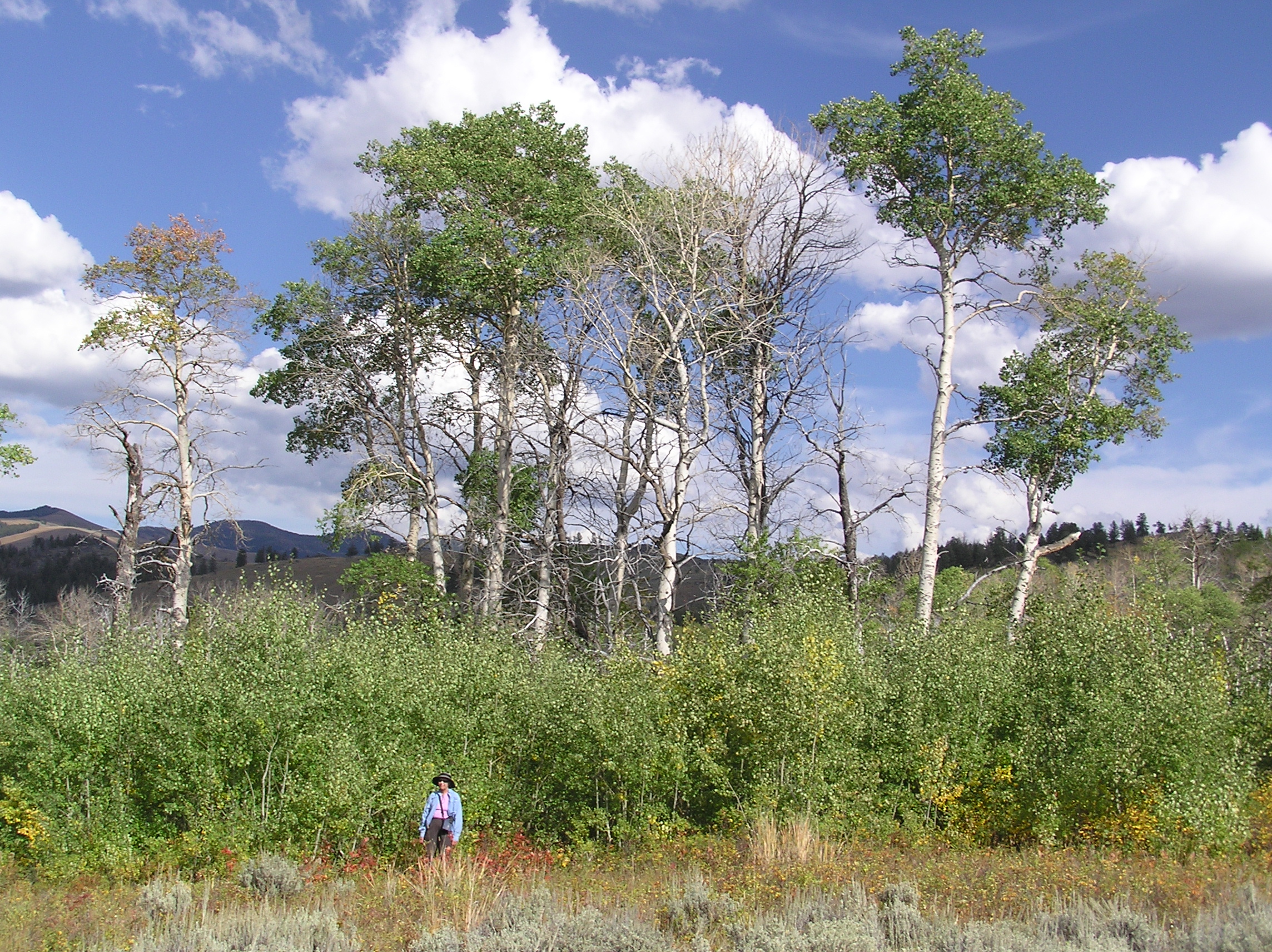For the first time in 80 years, a new generation of fully-fledged aspen trees has grown in Yellowstone’s northern range. According to a new study, the reason for the success is thanks to the wolves that were reintroduced into the national park in the 1990s.
Wolves were eradicated in Yellowstone by humans in the early 20th century as a way to protect livestock and “desirable” game animals, like deer and elk. With the apex predator gone, the elk population boomed. Their numbers grew rapidly, and without the threat of predation, they began grazing more freely across the landscape, including areas they once avoided due to the risk of being picked off by wolves.
It was good news for grazers, but bad news for young trees and plant life, which struggled to establish themselves before being munched into oblivion by empowered herbivores. The loss of these trees, in turn, damaged the population health of other animals that use them as habitat or a resource, such as beavers and cavity-nesting birds.
By the 1990s, conservationists launched an extensive project to reintroduce wolves back into Yellowstone National Park. The theory was that the wolves’ return would trigger a “trophic cascade” that would restore balance to the ecosystem.
In the new research, scientists at Oregon State University (OSU) argue this is certainly the case when it comes to aspen trees. They report the first documented recruitment of overstory aspen trees in northern Yellowstone since the 1940s.
They also say sapling density has increased over 152-fold between 1998 and 2021 as a result of reduced browsing by elk. This, they claim, is ultimately because of the wolves’ return, as well as the restoration of other large predators, like bears and cougars.

Researcher stands next to a new generation of overstory aspen trees in Yellowstone’s northern range.
Image credit: Luke Painter/OSU College of Agricultural Sciences
“The reintroduction of large carnivores has initiated a recovery process that had been shut down for decades. About a third of the 87 aspen stands we examined had large numbers of tall saplings throughout, a remarkable change from the 1990s when surveys found none at all,” Luke Painter, lead study author, who teaches ecology and conservation in the OSU College of Agricultural Sciences, said in a statement.
“This is a remarkable case of ecological restoration,” Painter said. “Wolf reintroduction is yielding long-term ecological changes contributing to increased biodiversity and habitat diversity.”
However, some scientists believe the impacts of the wolf renaissance in Yellowstone may be overstated.
A 20-year study by Colorado State University researchers was published in 2024 and found very little evidence of the “trophic cascade” of ecological restoration sparked by the wolves in Yellowstone National Park. While they didn’t doubt that the return of wolves was an important moment for conservation, they argued their research showed that apex predators weren’t a quick fix for restoring ecosystems.
“When you disturb ecosystems by changing the makeup of a food web, it can lead to lasting changes that are not quickly fixed,” Tom Hobbs, lead author of the 2024 study and professor emeritus with the Department of Ecosystem Science and Sustainability and the Natural Resource Ecology Laboratory, said in a statement.
“We can’t rule out the possibility that the ecosystem will be restored over the next 40 years as a result of the return of apex predators. All we can be sure of is what’s observable now – the ecosystem has not responded dramatically to the restored food web,” he added.
The new study is published in the journal Forest Ecology and Management.
Source Link: Thanks To Wolves' Return, Aspen Trees Thrive In Yellowstone For First Time In 80 Years